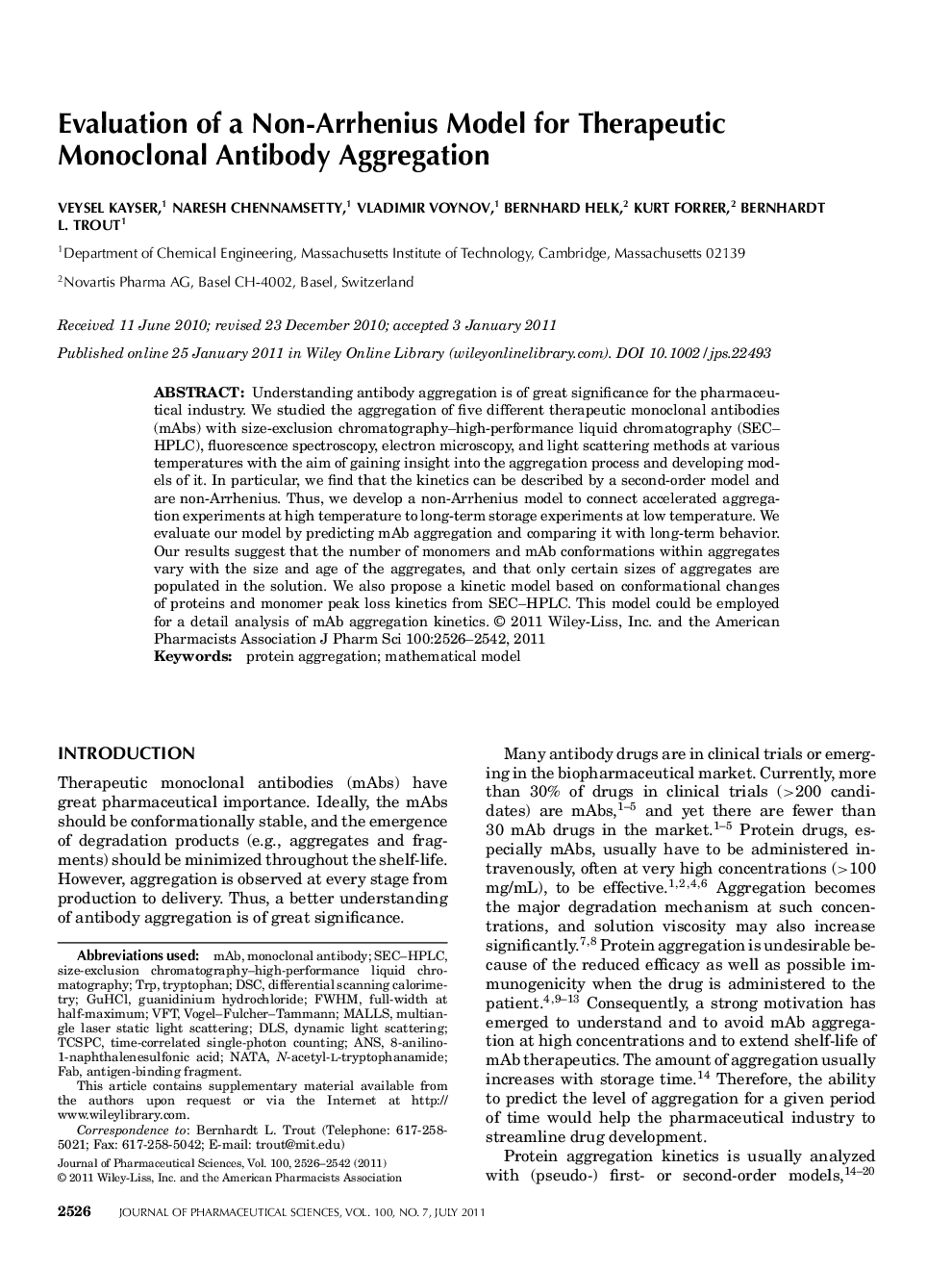| Article ID | Journal | Published Year | Pages | File Type |
|---|---|---|---|---|
| 2486607 | Journal of Pharmaceutical Sciences | 2011 | 17 Pages |
Abstract
Understanding antibody aggregation is of great significance for the pharmaceutical industry. We studied the aggregation of five different therapeutic monoclonal antibodies (mAbs) with size-exclusion chromatography-high-performance liquid chromatography (SEC-HPLC), fluorescence spectroscopy, electron microscopy, and light scattering methods at various temperatrues with the aim of gaining insight into the aggregation process and developing models of it. In particular, we find that the kinetics can be described by a second-order model and are non-Arrhenius. Thus, we develop a non-Arrhenius model to connect accelerated aggregation experiments at high temperatrue to long-term storage experiments at low temperatrue. We evaluate our model by predicting mAb aggregation and comparing it with long-term behavior. Our results suggest that the number of monomers and mAb conformations within aggregates vary with the size and age of the aggregates, and that only certain sizes of aggregates are populated in the solution. We also propose a kinetic model based on conformational changes of proteins and monomer peak loss kinetics from SEC-HPLC. This model could be employed for a detail analysis of mAb aggregation kinetics. © 2011 Wiley-Liss, Inc. and the American Pharmacists Association J Pharm Sci 100:2526-2542, 2011
Related Topics
Health Sciences
Pharmacology, Toxicology and Pharmaceutical Science
Drug Discovery
Authors
Veysel Kayser, Naresh Chennamsetty, Vladimir Voynov, Bernhard Helk, Kurt Forrer, Bernhardt L. Trout,
